Top 10 Graphic Design Trends for 2025
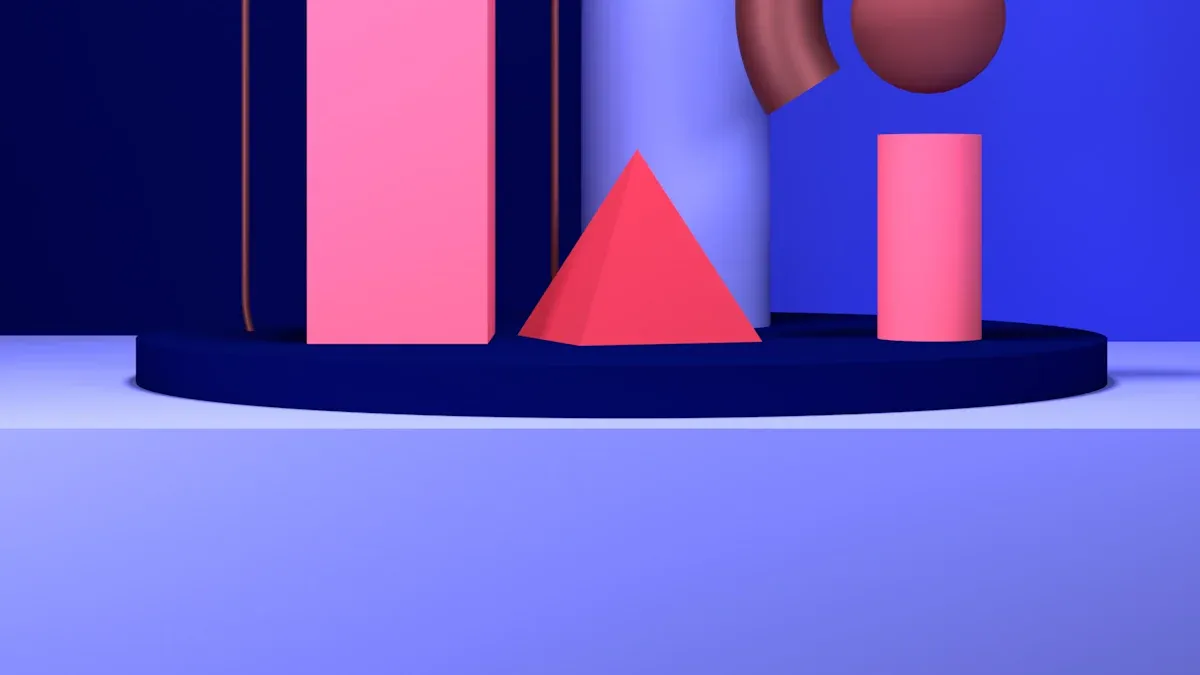
Staying updated with graphic design trends 2025 keeps your creativity sharp and your audience engaged. The numbers speak for themselves:
75% of consumers judge a company’s credibility by its website design.
Relevant visuals boost content views by 94%.
Businesses prioritizing design see 32% faster revenue growth than competitors.
Polished branding builds trust for 94% of consumers.
These trends reflect technology's rapid evolution and cultural shifts. AI tools, personalization, and inclusivity are reshaping graphic design. The revival of retro styles adds timeless appeal. Balancing innovation with timeless design principles ensures your work stays impactful and user-focused.
AI-Powered Design
Automating repetitive tasks for efficiency
AI-powered design tools are revolutionizing workflows by automating repetitive tasks. These tools eliminate redundancies, allowing you to focus on creative problem-solving. For example, AI can handle tasks like resizing images, generating templates, or organizing design assets. This automation not only saves time but also improves accuracy and consistency across projects. Designers benefit from faster iteration cycles and real-time feedback, which enhance project timelines and overall quality. By reducing manual workloads, AI empowers you to dedicate more energy to refining and perfecting your designs.
Personalizing visuals to enhance audience connection
Personalization has become a cornerstone of modern graphic design trends. AI-powered design tools enable you to create visuals tailored to your audience's preferences. By analyzing user data, these tools can suggest color schemes, layouts, and imagery that resonate with specific demographics. This level of customization fosters deeper engagement and builds stronger connections with your audience. For instance, AI can generate multiple design options based on user behavior, giving you the flexibility to choose and refine the most impactful visuals. Personalization not only enhances the user experience but also strengthens brand loyalty.
Expanding creative possibilities with AI-generated art
AI-generated art is pushing the boundaries of creativity in graphic design. These tools provide inspiration by offering design ideas you might not have considered. They can quickly generate multiple concepts, which you can adapt and customize to suit your vision. AI-powered image editing tools also save time by automating tasks like retouching and enhancing images. This technology allows you to experiment with bold, innovative designs while maintaining efficiency. By integrating AI-generated art into your workflow, you can explore new creative possibilities and stay ahead of emerging trends.
Retro Serif Branding
Evoking tradition and credibility in designs
Retro serif branding is making a strong comeback in graphic design trends. Its classic letterforms evoke a sense of tradition and trustworthiness, making it ideal for brands that want to establish credibility. You can use retro serif fonts to create designs that feel timeless yet approachable. For instance, many luxury brands rely on serif typography to communicate sophistication and heritage. This style resonates with audiences who value authenticity and craftsmanship. By incorporating retro serif elements, you can give your designs a nostalgic charm while maintaining a professional edge.
Blending with minimalist and maximalist aesthetics
Retro serif typography offers incredible versatility, allowing you to pair it with both minimalist and maximalist aesthetics. In minimalist designs, the clean and structured nature of serif fonts adds a touch of elegance without overwhelming the composition. On the other hand, maximalist designs benefit from the bold and intricate details of retro serif fonts, which enhance visual impact.
Examples of effective integration include:
Combining retro serif fonts with muted color palettes for a minimalist look.
Pairing ornate serif typography with vibrant patterns in maximalist designs.
This blend creates a balance between vintage appeal and modern sensibilities, ensuring your designs feel both familiar and fresh.
Applications in logos, packaging, and editorial design
Retro serif branding shines in various applications, from logos to packaging and editorial layouts. Serif fonts work well in logo design, where they convey stability and reliability. For packaging, retro serif typography can highlight artisanal qualities, making products stand out on shelves. In editorial design, serif fonts enhance readability while adding a touch of sophistication. Whether you’re designing for print or digital media, retro serif elements can elevate your work and connect with audiences on an emotional level.
Sustainability Graphics
Attracting eco-conscious consumers
Sustainability graphics play a vital role in attracting eco-conscious consumers. Visuals that highlight eco-friendly practices resonate with individuals who prioritize environmental responsibility. A 2021 survey revealed that 65% of consumers believe brands should contribute positively to society. Additionally, 55% of respondents expressed concern about the environmental impact of product packaging. These preferences show that incorporating sustainability into your designs can capture the attention of this growing audience. Products with ESG-related claims also experienced a 28% growth over five years, outperforming non-ESG products. By aligning your designs with these values, you can appeal to consumers who actively seek sustainable options.
Enhancing brand reputation through sustainability
Integrating sustainability graphics into your branding enhances your reputation. Consumers increasingly value brands that demonstrate environmental responsibility. A 2024 McKinsey study found that companies embracing sustainability are 3.2 times more likely to achieve above-average growth. Furthermore, nearly 75% of global consumers are willing to pay more for sustainable products. By showcasing your commitment to sustainability through thoughtful design, you can build trust and loyalty among your audience. For example, using eco-friendly icons, earthy color palettes, and recyclable packaging designs communicates your dedication to a greener future.
Encouraging responsible consumer behavior
Sustainability graphics inspire responsible consumer behavior by educating and motivating your audience. Designs that emphasize eco-friendly practices, such as recycling or reducing waste, encourage individuals to make better choices. Market research shows that sustainable products now hold a 23.8% market share, with a 12.4% five-year CAGR, compared to 5.4% for conventional products. Including clear, visually appealing messages about sustainability in your designs can influence purchasing decisions and promote long-term environmental awareness.
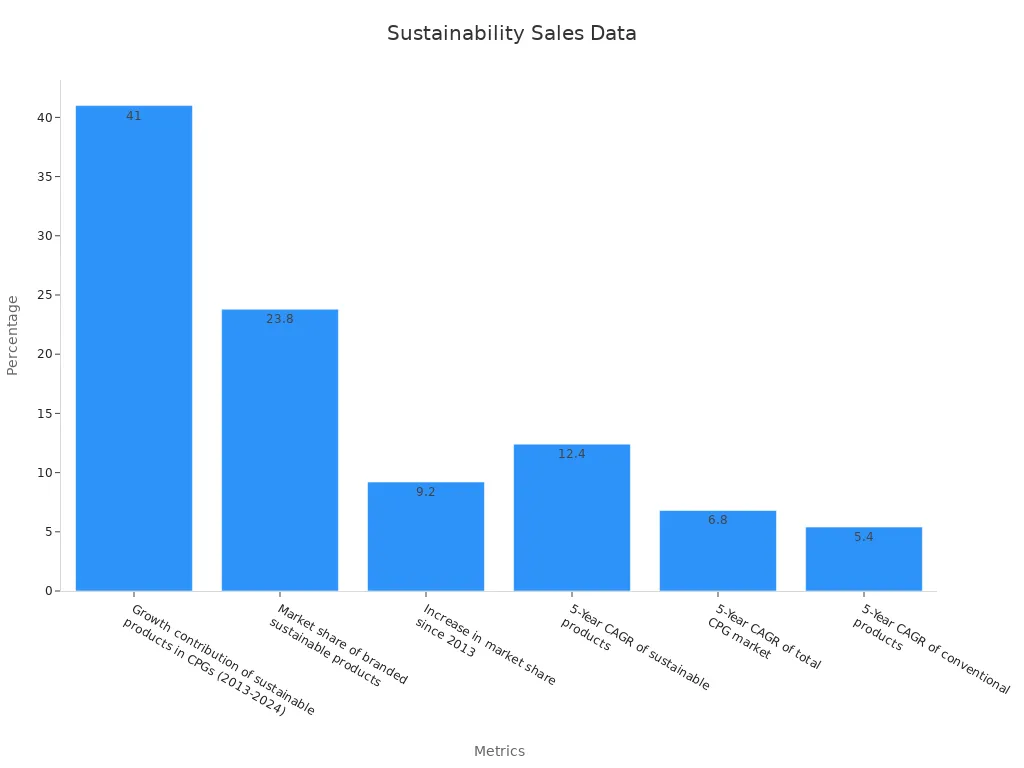
Augmented Reality in Design
Bridging the physical and digital worlds
Augmented reality bridges the gap between physical and digital spaces, transforming how you interact with designs. This technology overlays digital elements onto real-world environments, creating immersive experiences. For example, AR mirrors in trade shows allow visitors to virtually try on products or explore interactive displays. These mirrors achieve participation rates of 65-80%, far surpassing traditional methods. Engagement times also increase, with users spending 2-4 minutes interacting compared to the typical 20-30 seconds. By blending physical and digital elements, augmented reality enhances user engagement and makes designs more memorable.
Creating interactive and engaging experiences
Interactive experiences powered by augmented reality captivate audiences and encourage deeper connections. AR tools let you create dynamic visuals that respond to user actions, fostering a sense of involvement. For instance, participants often share their AR-generated content, with sharing rates reaching 50-60%, compared to just 5-10% for traditional photo booths. Optimized AR experiences also capture valuable data, achieving rates of 70-85%. These metrics highlight the effectiveness of augmented reality in creating engaging designs that resonate with users.
Applications in marketing, packaging, and entertainment
Augmented reality offers exciting applications across marketing, packaging, and entertainment. Brands like Saks Fifth Avenue use AR to let shoppers virtually try on clothes, while L’Oreal’s Makeup Genius app enables users to test makeup products in real time. The NHS employs interactive AR billboards to promote blood donation campaigns.
In packaging, AR enhances unboxing experiences, turning routine tasks into memorable moments. It provides additional product details and usage instructions, fostering stronger consumer-brand connections. These applications demonstrate how augmented reality aligns with graphic design trends, offering innovative ways to engage audiences and build loyalty.
Motion Graphics
Enhancing storytelling and brand messaging
Motion graphics transform storytelling into a visually engaging experience. Animated content attracts more attention than static images or text, helping your audience retain information better. For example, motion enhances cognitive functions, making your message stick longer. These graphics simplify complex ideas, allowing viewers to grasp key points quickly. They also evoke emotional resonance, making your stories relatable and impactful. By using motion graphics, you can create narratives that captivate viewers and maintain their interest across various platforms.
Versatility across digital platforms
Motion graphics adapt seamlessly to different digital platforms, making them a versatile tool for your designs. Whether you’re creating content for social media, websites, or presentations, these animations enhance engagement and deliver your message effectively. Tweets containing GIFs, for instance, experience 55% more engagement than those without. This demonstrates the power of animated visuals in capturing attention. Motion graphics also work well for mobile-first platforms, ensuring your designs remain impactful regardless of screen size. Their ability to combine visual appeal with functionality makes them a staple in modern graphic design trends.
3D Design and Typography
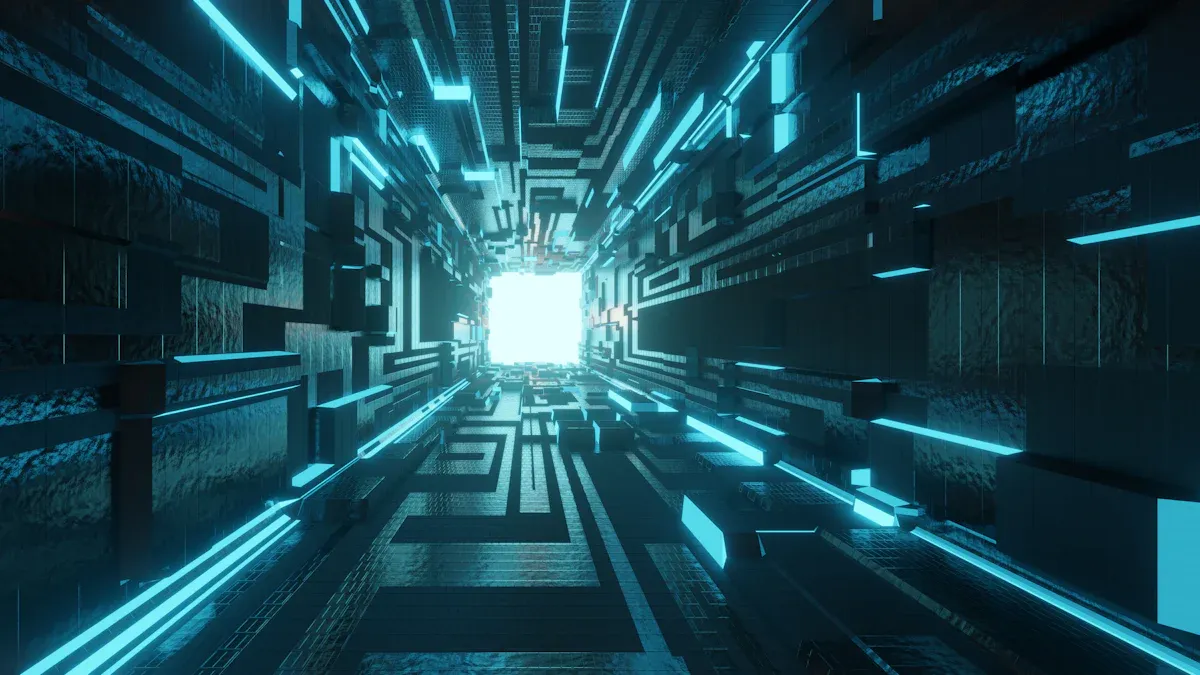
Adding depth and realism to visuals
3D design and typography add a new dimension to your visuals, making them more engaging and lifelike. By incorporating depth and realism, you can create designs that stand out and leave a lasting impression. For example, 3D elements can make product mockups or advertisements more visually appealing. They also enhance storytelling by giving your designs a tactile quality that resonates with viewers.
Versatility in branding and digital media
3D design and typography offer unmatched versatility across branding and digital media. You can use them to create logos, social media content, or even website interfaces that feel modern and dynamic. For instance, 3D typography can transform a simple headline into a focal point that grabs attention. This versatility allows you to adapt your designs to different platforms while maintaining a cohesive brand identity.
In digital media, 3D elements can enhance user experiences by making interfaces more interactive. For example, you can use 3D buttons or animations to guide users through a website. These features not only improve functionality but also make your designs more memorable. By leveraging 3D design, you can stay ahead of graphic design trends and create content that resonates with your audience.
Innovative opportunities for creative expression
3D typography opens up endless possibilities for creative expression. You can experiment with textures, lighting, and motion to create unique designs that push boundaries. In virtual reality (VR), typography becomes even more immersive. Designers can explore kinetic typography, where text moves and changes form, or 3D type, where letters take on physical dimensions and can be navigated by the user.
Minimalism
Communicating ideas clearly and effectively
Minimalism in graphic design emphasizes clarity by focusing on essential elements. This approach removes distractions, allowing your audience to concentrate on the core message. Studies on user experience highlight how minimalist design improves communication by prioritizing key content. For example, the study The Impact of Minimalist Design on User Experience (UX) found that removing unnecessary elements enhances user focus and understanding.
By adopting this principle, you can create designs that are not only visually appealing but also effective in delivering your message. Whether you’re designing a website, a logo, or a marketing campaign, minimalism ensures your ideas are communicated clearly and effectively.
Timeless appeal across design projects
Minimalist design has a timeless quality that makes it suitable for various projects. Its simplicity transcends fleeting trends, ensuring your work remains relevant for years. For instance, brands like Apple and Nike have consistently used minimalist aesthetics to maintain their iconic status. This approach works well for both digital and print media, as it adapts seamlessly to different formats.
By leveraging minimalism, you can create designs that stand the test of time while maintaining a modern and professional look.
Enhancing user experience with simplicity
Minimalism enhances user experience by simplifying interactions and reducing cognitive load. When you focus on essential elements, users find it easier to navigate and engage with your designs. For example, minimalist UX design highlights key features, ensuring users can quickly understand and interact with your content.
Benefits of minimalist design for user experience:
Improves clarity and communication.
Reduces distractions, allowing users to focus on important features.
Creates a clean and intuitive interface that enhances usability.
This user-first approach aligns with current graphic design trends, making minimalism a powerful tool for creating impactful and accessible designs.
Retrofuturism
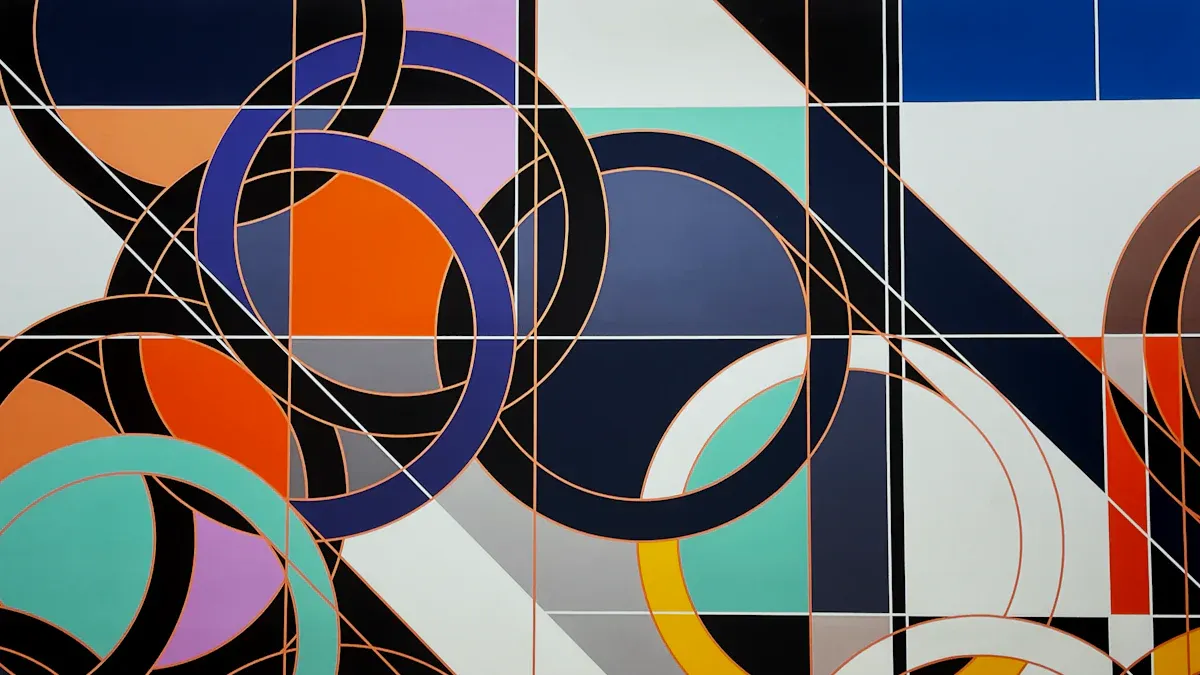
Combining nostalgic and futuristic aesthetics
Retrofuturism blends the charm of nostalgia with the excitement of futuristic design. This style draws inspiration from vintage elements while incorporating modern technology. You can create designs that feel both familiar and forward-thinking by combining classic features with futuristic objects. For example:
Machines or technology with a retro twist
Smooth geometric shapes like spheres and ovals
Sharp polygons that add a clean, modern edge
Vibrant neon colors paired with shining chrome
Dusty textures that evoke the grit of old machinery
This fusion of styles appeals to audiences who appreciate the past but crave innovation. Retrofuturism allows you to explore creative possibilities that balance history and progress, making it a standout choice in graphic design trends.
Offering versatility in creative projects
Retrofuturism offers unmatched versatility across creative projects. Whether you’re designing for branding, packaging, or digital media, this style adapts seamlessly. Its ability to mix historic and futuristic elements makes it suitable for diverse industries. For example, you can use retrofuturistic designs to create eye-catching advertisements, immersive website interfaces, or unique product packaging. The vibrant colors and geometric shapes of this trend ensure your designs stand out while maintaining a cohesive aesthetic. By embracing retrofuturism, you can push boundaries and deliver innovative visuals that resonate with your audience.
Balancing innovation with timeless design
Balancing innovation with timeless design is key to retrofuturism’s success. User research and trend analysis help you create designs that connect deeply with your audience. For instance, the design of a timekeeping product inspired by retrofuturistic vehicles demonstrates this balance. Disc hands and a radar-inspired dial honor the past while embracing futuristic elements. This approach ensures your work remains relevant and impactful. By blending creativity with timeless appeal, retrofuturism allows you to innovate without losing the emotional connection that nostalgia provides.
Inclusive Visuals
Reflecting diversity and inclusivity in designs
Inclusive visuals play a vital role in modern graphic design trends. By showcasing diversity, you can create designs that resonate with a broader audience. Studies reveal that 54% of consumers feel underrepresented in online advertising, while 71% expect brands to actively promote diversity. These numbers highlight the importance of reflecting cultural representation in your work.
To achieve inclusivity, focus on incorporating diverse imagery, colors, and themes that celebrate different identities. For example, using visuals that represent various ethnicities, genders, and abilities can make your designs more relatable. This approach not only enhances audience engagement but also positions your brand as socially responsible.
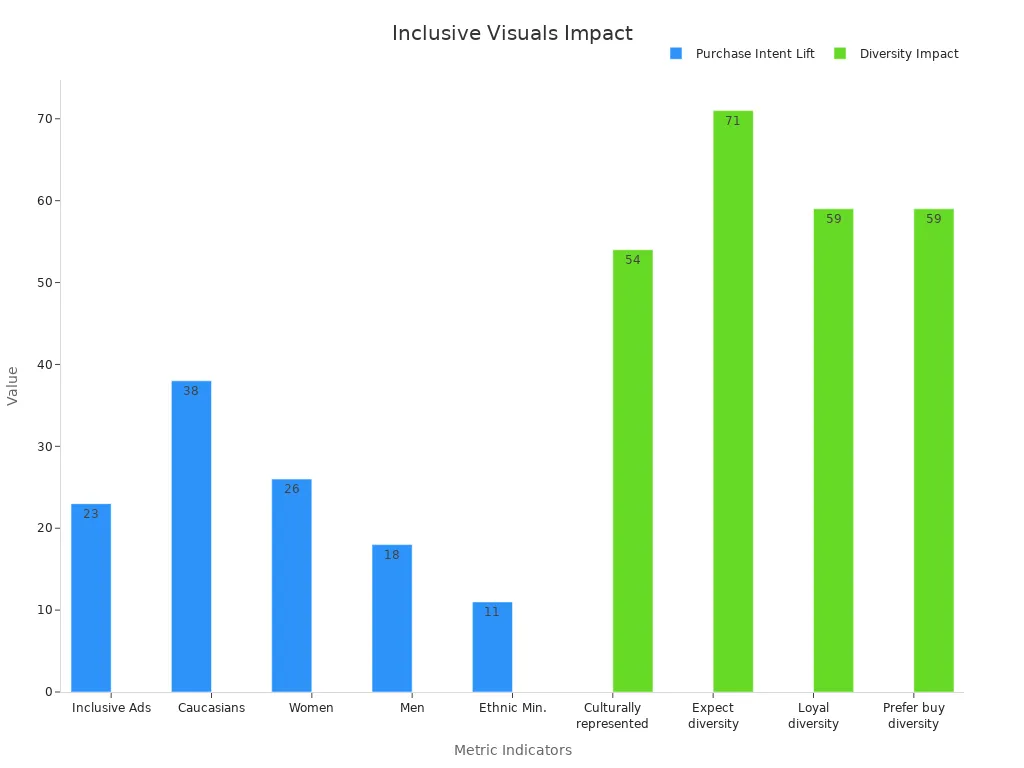
Building stronger connections with audiences
Inclusive visuals foster deeper connections with your audience by making them feel valued. Research shows that 75% of consumers globally consider diversity and inclusion when making purchasing decisions. Brands that genuinely embrace inclusivity are viewed more favorably, leading to stronger relationships.
By designing content that reflects diverse perspectives, you can reach new audiences and expand your market. For instance, inclusive visuals in advertising can make individuals from underrepresented groups feel seen and appreciated. This emotional connection boosts engagement and encourages loyalty.
Key insights from audience studies:
75% of consumers globally prioritize diversity in their purchasing decisions.
Inclusive visuals help brands reach new audiences by fostering a sense of belonging.
Brands committed to diversity build stronger customer relationships.
Enhancing brand reputation and loyalty
Integrating inclusive design practices strengthens your brand reputation and increases loyalty. A Forrester Research study found that inclusive design can lead to a 70% rise in customer loyalty. Additionally, McKinsey reports that companies excelling in gender diversity are 21% more likely to outperform competitors in profitability.
Consumers increasingly expect brands to adopt inclusive practices. In fact, 60% of respondents in a 2022 survey believe brands that fail to embrace inclusivity will become irrelevant. By prioritizing inclusive visuals, you can enhance your reputation and build lasting loyalty among your audience.
Dynamic Branding and Personalization
Adapting designs to user preferences
Dynamic branding allows you to tailor designs to meet the unique preferences of your audience. By analyzing user behavior, you can adjust visual elements like color schemes, typography, and layouts to create a more personalized experience. For instance, a ProfileTree study revealed that personalized digital strategies increased time spent on websites by 30%. This demonstrates how adapting designs to user preferences can boost engagement and make your content more impactful. When you align your designs with what your audience values, you create a stronger connection that fosters loyalty and trust.
Increasing engagement through personalized experiences
Personalized user experiences are at the heart of modern graphic design trends. Data-driven insights help you understand individual behaviors, enabling you to craft designs that resonate deeply with users. For example, 96% of marketers believe that delivering personalized experiences is essential for keeping customers engaged and encouraging repeat purchases. By tailoring content and offers to specific user needs, you can create meaningful interactions that enhance satisfaction. This approach not only increases engagement but also strengthens your brand’s relationship with its audience. Personalized experiences make users feel valued, which leads to higher retention and loyalty.
Leveraging AI and data for customization
AI plays a pivotal role in dynamic branding by enabling real-time customization. By leveraging AI tools, you can analyze vast amounts of data to identify patterns and preferences. This allows you to deliver highly targeted designs that align with user expectations. For example, businesses using AI-driven strategies have observed measurable outcomes, including a 10% increase in customer visits, a 6% rise in profitability, and a 15% boost in sales. These results highlight the transformative power of AI in creating personalized user experiences. By integrating AI into your workflow, you can stay ahead of trends and ensure your designs remain relevant and engaging.
The graphic design trends 2025 present exciting opportunities for creativity and innovation. You can explore dynamic branding, augmented reality, and personalization to enhance engagement and audience connection. Trends like sustainability, inclusivity, and bold minimalism reflect shifting consumer values. With AI automating creative tasks, adaptability will help you thrive in this evolving landscape.
Designers who embrace these trends while maintaining timeless principles will create impactful, future-ready designs.

